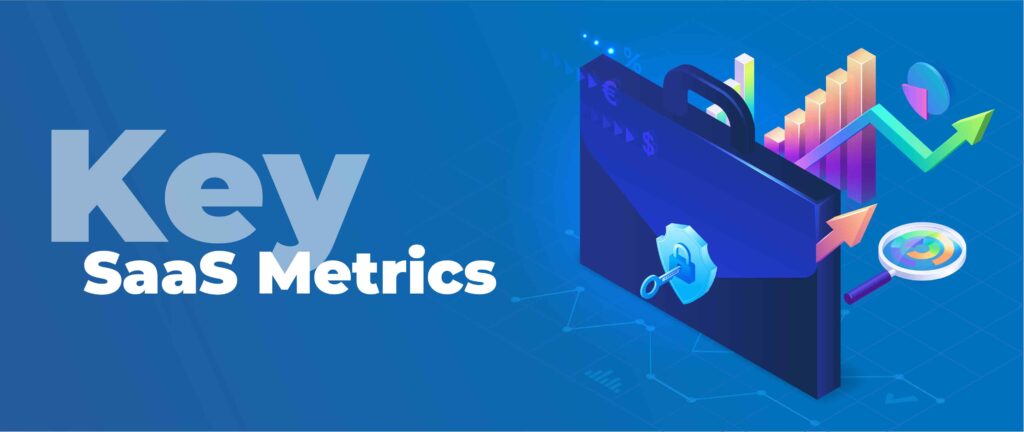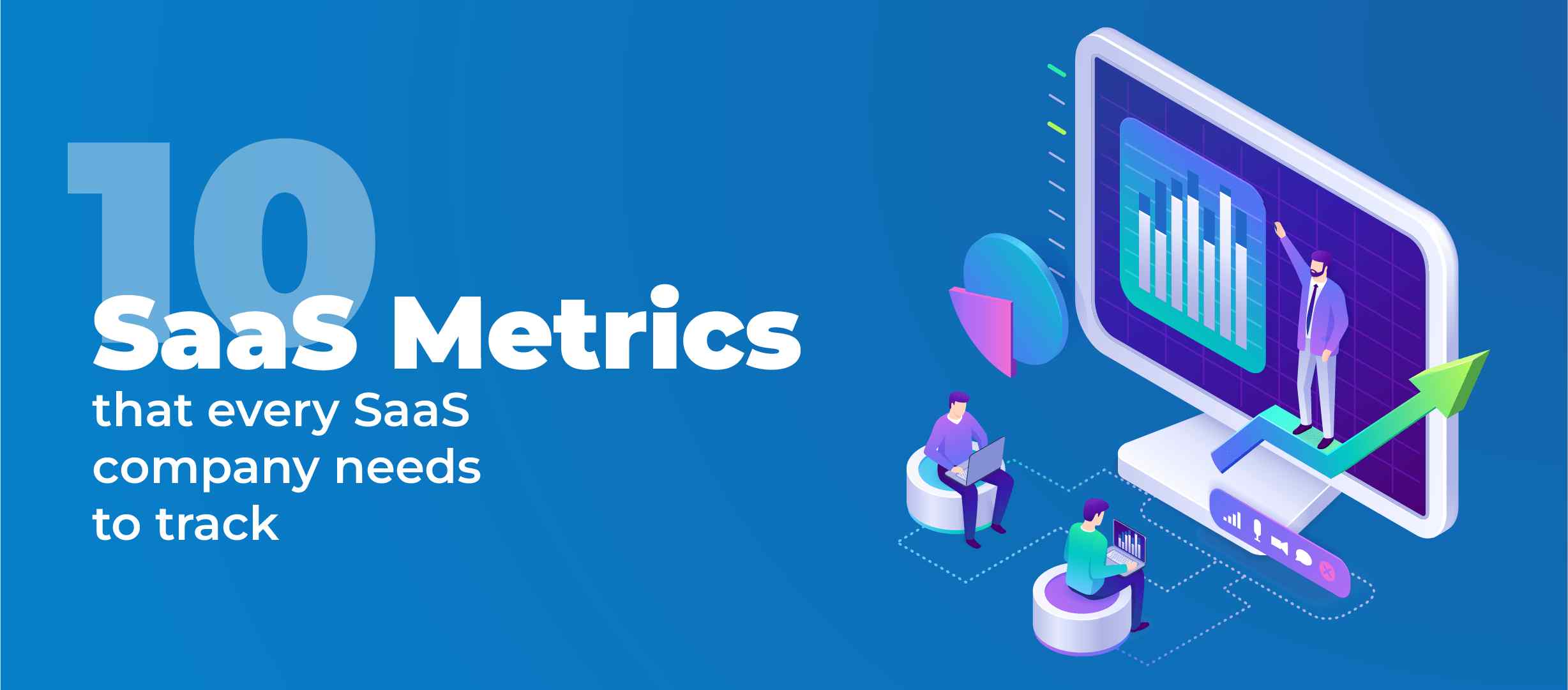Introduction
SaaS (software as a service) is one of the fastest-growing industries around the world. One way or another, we all are using a SaaS product; be it Webflow, Figma, or WordPress. And when you own a SaaS business, you know it’s no rat race here. You need to know your SaaS business model, lead the way with your niche and build long-term customer relationships. Above all, keeping a track of the SaaS metrics becomes significant. They tell you where you are going forward and where you need improvement.
You’ll be surprised to find out how many services are moving towards the SaaS business model. The value-based pricing with monthly or yearly subscriptions easily attracts a lot of users. But how long do you find users sticking to your SaaS product seems like an ordinary thing but not for the business. This can be monitored well with SaaS metrics. And such business metrics matters like Customer retention rate, churn rates, conversion rate, and more.
Data is a crucial thing for SaaS companies as their business model is unique from the others. The traditional business metrics will fail to measure the key attributes of a SaaS business. It is tricky for a SaaS Business compared to other industries. Here, you are not after the one-off payments you receive, but the number of customers you reach and retain over a period of time. Such SaaS metrics help you monitor your business performance.
For SaaS companies, having data is a helpful thing but knowing which data is important to track and which data is a waste of time for you is equally important. Trial and error is not a reliable option here. But what you can do is focus on SaaS metrics important for your business.
What are SaaS Metrics?
Ultimately, everything comes down to the world of numbers in Business. For SaaS companies, the number of resources invested should align with the outcome. If it’s not happening then there’s something wrong. And to figure out the problematic areas in your SaaS Business model there is SaaS analytics you need to consider.
To ensure steady growth and success, certain benchmarks need to be fulfilled. And those parameters are known as the SaaS metrics.
SaaS metrics answer the questions like how profitable your customers are? How can you increase customer acquisition? You get to analyze the momentum of your business with SaaS metrics and see your ability to grow and consistently grow.
The design and development team will take care of the user needs but the right business strategies and their outcomes will define your progress. And to measure those outcomes you need to keep track of the SaaS metrics explained below!
“A large part of SaaS growth depends on the SaaS metrics”
Key SaaS Metrics For Growth

1. NAU – SaaS Metric
The Number of Active Users (NAU) is the number of regular users of your service. It shows the loyal customer base you’ve acquired over time. Instead of focusing on increasing new users, your SaaS company should be focused on increasing the number of active users (NAU).
But this depends on the type of service you are providing. And on that basis, you decide who constitutes an active user. Like someone using your product for certain features only, using a monthly subscription, or using the application once a week only. Your service type and industry decide the active user metric.
Moreover, there are two groups of active users- Active mobile users and Active web users.
Furthermore, they can be sub-divided into three categories:
- Daily Active Users
- Weekly Active Users (WAU)
- Monthly Active Users (MAU)
Out of all, MAU is the best bet as most subscriptions are made monthly. With these data, you can measure the stickiness of your service using the formula below:
Stickiness ratio = DAU / MAU
The number of active users helps you evaluate the outcomes of marketing and UX strategies.
2. Churn rate
SaaS businesses rely on long-term customers for their growth.
Churn rate is the number of customers that downgrade their subscription plans or stop using the service over a period of time. When you fail to retain your customers and acquire new ones, then the churn rate goes up. Hence, your business becomes unsustainable.
It is also known as customer attrition. The churn rate should be ideally tracked every month. Some level of churn rate is necessary as a constant reminder to retain your existing customers. However, The more will be the churn rate, the more investment will be needed for maintaining your MRR and ARR.
Another way to counter churn rate is by negative churn rate, where you increase your average revenue so that it is higher than the investment you lose. you achieve that by upselling your existing customers and retaining them. The churn rate helps you identify the patterns that lead to custom dissatisfaction.
There are two types of Churn SaaS companies can track;
- Customer Churn- % of customers lost
- Revenue Churn- % of revenue lost
Revenue churn is the revenue lost after customer cancel their plans, downgrades, or such. To track the number of customers lost in a month your go for customer churn but to track the MRR lost because of customer churn, then you can track revenue churn.
3. Annual recurring Revenue (ARR)
The minimum revenue generated by your SaaS business yearly without any additional effort is known as the Annual Recurring revenue i.e., ARR. it is similar to MRR, except it is calculated annually. It helps make informed future decisions for your business.
How to calculate ARR?
ARR = MRR * 12
ARR helps in keeping a track of aspects like new sales, renewals, and upgrades as well as the downgrades and lost customers.
Based on the current MRR, you can predict the revenue your company can generate annually. With the assumption nothing will change the whole year. It will not provide accurate results but can help in making a forecast and plan accordingly.
4. Monthly recurring revenue (MRR)
Monthly recurring revenue is the minimum revenue you make without making any additional efforts. It is the lifeline of your SaaS business. It is important to know how much it costs to convert a lead into a user. Certainly, it is one of the top three SaaS metrics, you shouldn’t ignore.
MRR helps you to forecast your company’s cash flow to plan and control your investments and revenue. It creates a baseline for you and helps in predicting your incoming revenue.
Meanwhile to calculate MRR is tricky comparatively,
For net new MRR,
Net New MRR = Add-on MRR + New MRR – Churn MRR
Here,
- The net New MRR- is the total MRR including Add-on MRR and Churn MRR in a month
- New MRR- revenue from new customers
- Churn MRR is the MRRR you lose when customers leave your service or downgrade their subscriptions.
- Add-on MRR is the revenue generated from existing users upgrading their plan or purchasing an add-on, i.e., any upgrade that makes them pay more. It is also known as the expansion MRR.
Furthermore, you need to make sure the new MRR is always more than the MRR churn rate. If it goes the opposite, then it means that you are losing customers faster than you are acquiring new customers.
5. Average revenue per account (ARPA)
ARPA refers to the average revenue generated by your SaaS company per account or a user. It is generally calculated every month but it can be calculated annually, biannually, or quarterly. The average revenue per account shows you how much difference upselling is making on your SaaS business.
When you have your MRR, then you can easily calculate ARPA;
ARPA = MRR / Total no. of customers in the period (month or quarter)
One of the reasons for calculating ARPA is it is directly related to MRR, implying when you can increase your ARPA, you’ll increase your MRR. Moreover, compare the last year’s ARPA of the same month as the present to see how much growth your business has achieved.
Additionally, this ratio will break you free from the belief that more customers = more growth. Proving that, there are alternate ways for increasing revenue such as upselling and pricing restructuring.
6. Customer Lifetime Value (CLV)
Customer lifetime value is the total revenue the customer generates from using the service. The longer they are using your service the more lifetime value will be. CLV ensures the customer is not spending less than the cost of acquiring them.
Customer lifetime value or LTV gives the estimate of the total revenue you make from a customer before they churn. It helps you determine the cost of acquiring a new user. Remember, LTV should always be higher than CAC. if LTV is less than CAC, here’s what you can do:
- Restructure the pricing
- Optimize your CAC
- Increase expansion MRR
- Reduce churn time
To calculate Customer lifetime Value,
- Customer Lifetime = 1/Customer Churn rate
- Then, LTV = ARPA x Customer Lifetime
This SaaS metric helps you make informed decisions and indicates the company’s success.
7. Customer Acquisition Cost (CAC)
Customer acquisition cost or CAC is the total cost of acquiring new customers including ads, promotional activities, and outreach costs. Most startups fail because they cannot control their CAC. The CAC ratio varies on your product cost.
To calculate customer acquisition costs,
CAC = Total outreach cost/number of sales per period
A good CAC ratio is 3:1, which implies that the value a customer receives 3 times the cost of acquisition. Notably, if the ratio is 2:1 or 1:1 then CAC is too high. To ensure a good ratio, build healthy customer relations, deliver a valuable experience and handle queries and complaints well.
8. Customer Retention Rate (CRR)
Customer retention rate is a key SaaS metric that should be a part of your regular reports. It increases the lifetime value(CLV) of your users and increases sales too!
Customer retention rate refers to the number of customers that continue to use your product. When you focus on building brand affinity along with the value-addition you offer, you achieve customer retention. A good CRR is a sign that you were successful in establishing long-term customer relationships and have delivered valuable services to them.
Every user contributing to your MRR regularly is a contributor to the customer retention rate. It is better to focus on retaining the existing users rather than acquiring new ones and then retaining them.
To calculate the Customer retention rate,
- Firstly, define a period you want to monitor.
- List out the number of customers you have at the end of that period
- Subtract the new customers you’ve acquired during the period
- Divide the number by the no. of customers you had at the beginning of the period
- Multiply the figure with 100
What’s a good customer retention rate?
There’s no definite answer to the above question. CRR can vary depending upon the type of industry you are in. don’t focus on reaching a benchmark, but maintain your customer retention rate above the baseline.
Pro tip: for SaaS companies, Calculate your CRR as far back in time as you can. Whether going quarterly or yearly basis, you can track the progress you’ve made. You’ll spot a pattern and if it’s going up, that’s great and if not, you need to re-analyze the current approaches.
9. Expansion MRR
Expansion MRR means the revenue generated when the existing users upgrade their plans and starts paying more. Any upgrade they’ve made to their existing plans, or an add-on purchase, or including additional users, whatever makes them pay more is expansion MRR.
To highlight, for B2B SaaS companies you can directly acquire an expansion MRR by charging by the number of users or seats in a plan. With a growing team, they will pay more for new users. It is an effective method to gauge whether your existing users are buying the products and add-ons you offer.
The biggest benefit of this SaaS metric is that you can increase your revenue without having to acquire new customers for your product without spending any extra penny. Hence, your growth won’t dependent only on acquiring new users.
10. Conversion Rate
Business metrics- all SaaS companies rely on this business metric; Conversion rate.
Conversion rate is one of the most common SaaS KPIs, especially used by marketers. Everyone has their definition of conversion. And for companies, conversion rates refer to the number of leads (potential users) you successfully turned into an active user i.e., a paying customer.
The most accurate way of calculating conversion rate is :
Conversion rate = No. of Qualified leads/ new customers at the same time
This simple formula will showcase the ratio of leads turning into revenue streams. We recommend using a marketing automation tool or a CRM to track your conversion rate. Marketing efforts are important for a SaaS company and conversion rates signal you to take the measuring steps if the marketing strategies are not efficient.
Moreover, the conversion rate of free users to paid users needs your tantamount attention.
Conversion rate = total no. of trial users turned into paid users/ total no. of trial users
Here a high conversion indicates that the users quickly discovered your product’s value and recognized and are using the features well. Hence, the onboarding process worked like a charm here.
Final Words on SaaS Metrics
These SaaS metrics help you figure out your current position in numbers. This will help you minimize future risk, explore different approaches and boost SaaS growth. Data-driven measures ensure strategic business growth and allow you to take your SaaS company to reach where it should be.


















